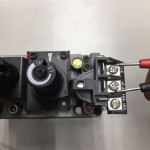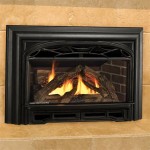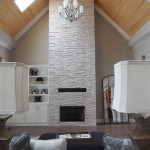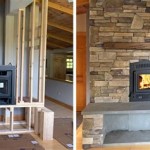How To Light A Gas Fireplace With An Ignitor
A gas fireplace offers a convenient and efficient alternative to traditional wood-burning fireplaces. A key component of modern gas fireplaces is the ignitor, which allows for easy and safe lighting without the need for matches or lighters. This article provides a comprehensive guide on how to light a gas fireplace equipped with an ignitor, covering essential safety precautions, step-by-step instructions, and troubleshooting tips.
Before initiating any procedure, it is paramount to understand the type of gas fireplace and its specific operating instructions. Gas fireplaces vary in design and control systems, making it essential to consult the manufacturer's manual for model-specific guidance. Familiarizing oneself with the fireplace's components, including the gas valve, ignitor button or switch, pilot light assembly (if applicable), and burner, is crucial for safe and effective operation.
Understanding the Safety Precautions
Safety should always be the top priority when dealing with gas appliances. Before attempting to light a gas fireplace, ensure the area around the fireplace is clear of flammable materials, such as curtains, furniture, and paper. Never operate the fireplace if a strong gas odor is present. If a gas leak is suspected, immediately evacuate the premises and contact the local gas company or fire department from a safe location. Avoid attempting to light the fireplace until the source of the leak has been identified and resolved by a qualified professional.
Proper ventilation is another critical safety consideration. Most gas fireplaces are designed to be vented, meaning they have a chimney or vent pipe to exhaust combustion byproducts outside the building. Ensure that the vent is clear of obstructions, such as bird nests or debris, before operating the fireplace. Operating a gas fireplace with a blocked vent can lead to a buildup of carbon monoxide, a colorless and odorless gas that can be deadly. Carbon monoxide detectors should be installed and regularly tested in homes with gas appliances.
Regular maintenance is essential for the safe and efficient operation of a gas fireplace. A qualified technician should inspect the fireplace annually to check for gas leaks, vent obstructions, and other potential problems. The burner and pilot light assembly should be cleaned regularly to remove dust and debris that can interfere with proper ignition and combustion. Any damaged or worn parts should be replaced promptly by a qualified service professional.
Step-by-Step Instructions for Lighting a Gas Fireplace With an Ignitor
The procedure for lighting a gas fireplace with an ignitor generally involves the following steps. Refer to the manufacturer's manual for specific instructions for the fireplace model.
Step 1: Prepare the Fireplace. Begin by ensuring the fireplace is clean and free of debris. Remove any obstructions from the firebox and check the vent for blockages. The glass door, if present, should be properly installed and sealed.
Step 2: Locate the Gas Valve. The gas valve is typically located near the fireplace, either behind an access panel or within a compartment. Identify the gas valve and ensure it is in the "OFF" position before proceeding.
Step 3: Purge the Gas Line (If Necessary). If the gas fireplace has not been used for an extended period, it may be necessary to purge the gas line to remove any air that may have accumulated. To do this, turn the gas valve to the "PILOT" position (if applicable) and press and hold the pilot light button. If there is no specific "PILOT" position on the valve, follow the manufacturer's instructions for purging the gas line. Hold the button for approximately one minute to allow any air to escape from the gas line. This step is crucial for ensuring a consistent gas supply to the pilot light or burner.
Step 4: Turn the Gas Valve to "ON" or "PILOT." After purging the gas line (if necessary), slowly turn the gas valve to the "ON" or "PILOT" position, depending on the fireplace model. Some fireplaces have a separate "PILOT" position for lighting the pilot light, while others ignite the burner directly.
Step 5: Activate the Ignitor. Once the gas valve is in the correct position, activate the ignitor by pressing the ignitor button or switch. The ignitor generates a spark that ignites the gas. Continue pressing the ignitor button until the pilot light or burner ignites. It may take several attempts for the gas to reach the ignitor.
Step 6: Hold the Pilot Light Button (If Applicable). If the fireplace has a pilot light, continue holding the pilot light button for approximately 20-30 seconds after the pilot light ignites. This allows the thermocouple or thermopile to heat up and sense the presence of the pilot flame. The thermocouple or thermopile is a safety device that shuts off the gas supply if the pilot light goes out.
Step 7: Release the Pilot Light Button (If Applicable). After holding the pilot light button for the specified time, release the button. The pilot light should remain lit. If the pilot light goes out, repeat steps 4-6. If the pilot light continues to go out, there may be a problem with the thermocouple, gas supply, or pilot light assembly, requiring professional assistance.
Step 8: Turn the Gas Valve to "ON." Once the pilot light is lit (if applicable) and remains lit after releasing the pilot light button, turn the gas valve to the "ON" position. The main burner should ignite, and the fireplace should begin to produce heat.
Step 9: Adjust the Flame Height. Most gas fireplaces have a control knob or switch that allows the user to adjust the flame height. Adjust the flame height to the desired level, following the manufacturer's instructions.
Step 10: Observe the Fireplace. After lighting the fireplace, observe it for a few minutes to ensure it is operating correctly. Check for any unusual noises, smells, or flickering flames. If any problems are detected, turn off the fireplace immediately and contact a qualified service professional.
Troubleshooting Common Issues
Despite following the instructions carefully, problems may arise when lighting a gas fireplace. Common issues and possible solutions are detailed below.
Problem 1: The Ignitor Does Not Produce a Spark. If the ignitor does not produce a spark when the button is pressed, check the following:
- Battery: If the ignitor is battery-powered, ensure the battery is fresh and properly installed.
- Wiring: Check the wiring connections to the ignitor to ensure they are secure.
- Ignitor Module: The ignitor module may be faulty and require replacement.
Problem 2: The Pilot Light Does Not Light. If the pilot light does not light, check the following:
- Gas Supply: Ensure the gas supply is turned on and that there is sufficient gas pressure.
- Pilot Light Orifice: The pilot light orifice may be clogged with debris. Clean the orifice with a small wire or needle.
- Thermocouple: The thermocouple may be faulty and require replacement.
Problem 3: The Pilot Light Goes Out After Releasing the Button. If the pilot light goes out after releasing the pilot light button, check the following:
- Thermocouple: The thermocouple may be faulty and require replacement.
- Pilot Flame: Ensure the pilot flame is properly positioned to heat the thermocouple.
- Gas Pressure: Low gas pressure can cause the pilot light to go out.
Problem 4: The Burner Does Not Ignite. If the burner does not ignite after the pilot light is lit, check the following:
- Gas Valve: Ensure the gas valve is fully open.
- Burner Ports: The burner ports may be clogged with debris. Clean the burner ports with a brush or vacuum cleaner.
- Gas Pressure: Low gas pressure can prevent the burner from igniting.
Problem 5: Unusual Odors or Noises. If unusual odors or noises are detected during operation, turn off the fireplace immediately and contact a qualified service professional. These symptoms may indicate a gas leak or other serious problem.
This article has highlighted the procedure for safely lighting a gas fireplace utilizing an ignitor, emphasizing the importance of safety measures and addressing common troubleshooting scenarios. Consulting the manufacturer’s instructions is essential for safe and effective operation.

How To Light The Pilot On A Gas Fireplace

Gas Fireplace Pilot Lights Your Complete Guide Universe

How To Relight A Millivolt Valve Gas Fireplace Pilot Light Tophat Pro

How To Light A Gas Fireplace The Home Depot

How To Light A Gas Fireplace The Home Depot

Gas Fireplace Pilot Lights Your Complete Guide Universe

How To Light The Pilot With A Piezo Igniter

How To Light Start A Gas Fireplace Using Real Example

3 Ways To Light A Gas Fireplace Wikihow

Fireplace And Gas Log Lighting Instructions








